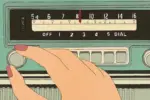Video essays are a special breed of media criticism. Between scripted narrations, atmospheric sound effects and coordinated visuals, video essayists play with the senses to make their arguments in a way that traditional written criticism simply cannot. Watch any video essay on YouTube and you’re not only met with a unique perspective on art — you’re also following a specific style of editing, listening to a particular taste in music and hearing the actual voice of the video essayist as they make their case. These elements make the format feel personal. The more content a video essayist puts out into the world, the greater insight an audience will have about their worldview and personality.
This individualistic aspect of video essays is what makes them perfect for video game commentary. There hasn’t been a Roger Ebert of video games. At least, not yet: Mainstream game criticism is still recognized more by publisher (i.e. IGN, Polygon) than by author, but the creative malleability of the video essay has allowed distinct voices to gain an audience within the gaming community. These three video essayists each embody this individualism, providing diverse perspectives on gaming that reach beyond the typical out-of-ten score.
1. Noah Caldwell-Gervais
Funnily enough, Noah Caldwell-Gervais has been called the “closest thing video games have to Roger Ebert.” He may not have a column in the Chicago Sun-Times, but he certainly puts the “essay” in “video essayist.” Populated with anecdotes and artistic references, Caldwell-Gervais’ videos bring a title out of the gaming vacuum and ruminate on its meaning in the context of other creative works, politics, history and personal experiences. Many viewers appreciate how thorough these ruminations can be. As a result, Caldwell-Gervais’ video essays typically last several hours. While their length can be intimidating, each video is eloquently written in a manner that feels inviting and conversational, even as it bounces around myriad insights and references.
When tweeting about his analysis of “Death Stranding,” Caldwell-Gervais noted, “…the only way I could figure out my closing paragraph was to talk about Cat Stevens for a full minute. God help this essay.” But despite their appearance, these references are hardly random. For instance, in the video “Dissecting Dishonored,” Caldwell-Gervais references Upton Sinclair’s “The Jungle” to better illustrate the game’s grungy aesthetics, while in another piece he questions the thematic relationship between Tom Clancy novels and “Tom Clancy’s Ghost Recon: Wildlands.” All these mentions serve to legitimize video games as art that can be compared to other art — a notion that has been discouraged by some popular critics.
While there is instant recognizability to Caldwell-Gervais video essays, which purposely emulate the writing styles of his favorite travel authors, it is only one facet of his identity as a game commentator. His combined interest in travel and gaming can also be seen in some of the various road trips he has documented on his YouTube channel. Works like “The Real-Life Landscapes of Fallout,” in which he treks across the United States to explore locations featured in the “Fallout” franchise, perhaps best exemplify the dedication and curiosity that define Caldwell-Gervais as a video essayist.
2. Jacob Geller
Much like with Caldwell-Gervais, outside references are abundant in the works of Jacob Geller. Both video essayists seem to enjoy framing their subjects through the lenses of pop culture, history, art and ethics. But while some video essayists use these allusions to support their perspectives on a title, Geller instead uses video games as a vessel for discussing more abstract ideas.
You would be hard-pressed to find a standard review on Geller’s YouTube channel. He has no “Super Mario Galaxy” retrospective, but he does have a piece titled, “The Quiet Sadness of Mario Galaxy.” In it, he dissects the moments of “Super Mario Galaxy” that play into themes of isolation and melancholy — things that, as he notes, aren’t typically expected of “Super Mario” titles. As Geller elaborates on these feelings, it becomes clear that his commentary is just as much about them as it is about “Super Mario Galaxy.”
Usually clocking in between 10-30 minutes in length, Geller’s video essays meticulously examine specific components of video games and their larger implications in the real world. Another great example of Geller’s writing at work is “Judaism and Whiteness in Wolfenstein,” where he examines the roots of “Wolfenstein” lore in early 20th-century history — specifically, the methods of racial oppression in pre-World War II Germany and the United States. Obviously, “Wolfenstein” is also about just shooting Nazis, but Geller’s videos aren’t meant to be holistic critiques. Instead, their specificity provides new opportunities for players to examine familiar titles in a new light.
3. ThorHighHeels
All video essayists have their own style, but none are as distinctly stylish as ThorHighHeels. Frequently composing his own music and injecting an early-2000s flair into his visuals, ThorHighHeels has developed an aesthetic that pairs nicely with his interest in obscure, vintage and Japan-exclusive video games.
Curation can be a statement in and of itself, and ThorHighHeels has consistently voiced an appreciation for lesser-known titles and subgenres with his “So I’ve Been Playing” series. While the subjects of these videos can range from poorly localized PlayStation 1 games to best-selling modern titles, many of them see ThorHighHeels pointing out the unique mechanics of past generations and speculating about how they could have developed into the present day.
The aesthetics of ThorHighHeels — partially inspired by the games of cult classic developer Suda51 — aid in creating continuity between each new video. “We’re back in the 2000s,” the graphics say, flashing and drifting across the screen in ways that often echo early PS2 or GameCube game menus. There is a certain cryptic familiarity to ThorHighHeels’ style as a video essayist, intentionally evoking the same feelings of mystery and intrigue that filled the minds of viewers back when they encountered video games for the first time. It’s a purposeful nostalgia, where evoking old memories can provide an opportunity for “outdated” generations and less recognized developers to join in the present-day dialogue surrounding video games. While other video essayists encourage new perspectives mainly through vocal theses and arguments, ThorHighHeels’ showcasing of obscure titles is a thesis in and of itself: “This is worth a closer look.”

















